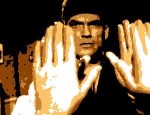Film Review

The eerily cramped submarine interiors and some superb underwater model sequences (which surpass those seen in Das Boot) help to create an aura of forbidding menace and tension, which is heightened further by the exemplary performances and some imaginative direction and camerawork. The film concludes with a stunningly executed battle scene, which belies the modest budget and is surprisingly vicious for its time, its intense visceral impact enhanced by some stylish editing.
An unusually swarthy John Mills leads a solid cast of great British character actors that includes Eric Portman, Niall MacGinnis and Jack Watling, each delivering a convincing character portrayal rather than the usual wartime stereotype. The film was directed by Anthony Asquith, who had previously worked with Mills on another wartime drama, Cottage to Let (1941), but is far better known for his stage play adaptations, notably Pygmalion (1938) and The Importance of Being Earnest (1952). Although action films of this kind were not Asquith's forte, he does a superb job here and crafts a tense adventure drama that still holds up remarkably well today.
© James Travers 2010
The above content is owned by frenchfilms.org and must not be copied.
Film Synopsis
When the Royal Navy submarine Sea Tiger returns to base after a long period at sea, her crew, led by Lieutenant Taylor, is looking forward to some well-earned leave. But leave is cancelled and the crew find themselves with a new assignment, to sink the German battleship Brandenburg before it begins sea trials in the Baltic Sea. On the way, the submarine picks up three German airmen, who are stranded on a buoy after being shot down. One of the Germans panics and reveals that Brandenburg has already passed into the Baltic Sea. Although fuel is running low, Taylor gives the order for Sea Tiger to follow the battleship. Having launched five torpedoes on Brandenburg, Sea Tiger is herself attacked by German destroyers...© James Travers
The above content is owned by frenchfilms.org and must not be copied.
Similar Films
Here are some other films you may enjoy watching:- La Route impériale (1935)
- Le Miracle des loups (1924)
- The Great Escape (1963)
- Michel Strogoff (1926)
- La Fayette (1962)
Other related links:
Film Credits
- Director: Anthony Asquith
- Script: Frank Launder, J.B. Williams (story), Val Valentine (story)
- Cinematographer: Jack E. Cox
- Music: Hubert Bath
- Cast: John Mills (Captain), Louis Bradfield (First Officer), Ronald Millar (Third Officer), Jack Watling (Navigating Officer), Reginald Purdell (Coxwain - C), Caven Watson (Chief Engine Room Artificer), Niall MacGinnis (Torpedo Gunner's Mate), Eric Portman (On Hydrophones - L), Leslie Weston (Leading Torpedo Operator), Norman Williams (Periscope Operator), Lionel Grose (Torpedo Operator), David Peel (Helmsman - 'Oxford'), Philip Godfrey (Steward - 'Flunkey'), Robb Wilton (Cook - 'Pincher'), Marie Ault (Mrs. Metcalfe), Victor Beaumont (German Airman), Frederick Burtwell (Sidney Briggs), Ian Fleming (Captain), Philip Friend (Humphries), Walter Gotell (Luftwaffe Captain)
- Country: UK
- Language: English / German
- Support: Black and White
- Runtime: 98 min
The very best fantasy films in French cinema

The very best of French film comedy

The best of American film noir
